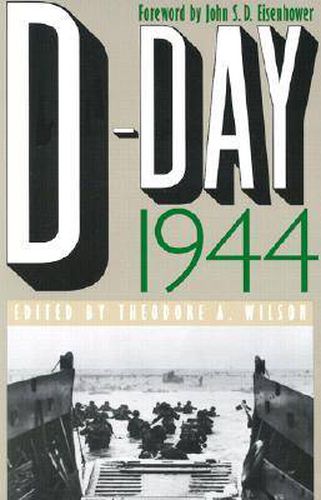Readings Newsletter
Become a Readings Member to make your shopping experience even easier.
Sign in or sign up for free!
You’re not far away from qualifying for FREE standard shipping within Australia
You’ve qualified for FREE standard shipping within Australia
The cart is loading…






June 6, 1944: the Allies launch the largest combined aerial and amphibious assault in modern history. Taking the Germans by surprise, they storm the heavily fortified defences at the beachheads along the Normandy coast. The cost in Allied lives is enormous (nearly 10,000 lost at Omaha alone), but the long-awaited Second Front is finally opened, marking the beginning of the end for Hitler’s Third Reich. 50 years later, we are still trying to come to grips with the impact of what General Dwight Eisenhower called
this great and noble undertaking . In
D-Day 1944
20 authors reassess the meanings and lessons of this monumental event and show why it retains such a prominent place in our national memory. Drawing upon a vast array of newly available archival sources, these authors extend and revise our understanding of coalition warmaking, the controversy over opening the Second Front, the logistics of operations
Bolero
and
Overlord , air and naval operations, small unit training and combat, the unique contributions of
special forces
and of
Ultra
and
Fortitude
intelligence, the war zone experience for French civilians, Eisenhower’s leadership, and the comparative performances of the American, British and Canadian forces in combat.
D-Day 1944
also features valuable eyewitness commentaries by General Omar Bradley, Vice-Admiral Friedrich Ruge (German Navy), Pulitzer Prize-winning journalist Don Whitehead, and George Marshall’s biographer Forrest Pogue. Together, these essays remind us why a half century later D-Day remains one of the true defining moments of World War II.
$9.00 standard shipping within Australia
FREE standard shipping within Australia for orders over $100.00
Express & International shipping calculated at checkout
June 6, 1944: the Allies launch the largest combined aerial and amphibious assault in modern history. Taking the Germans by surprise, they storm the heavily fortified defences at the beachheads along the Normandy coast. The cost in Allied lives is enormous (nearly 10,000 lost at Omaha alone), but the long-awaited Second Front is finally opened, marking the beginning of the end for Hitler’s Third Reich. 50 years later, we are still trying to come to grips with the impact of what General Dwight Eisenhower called
this great and noble undertaking . In
D-Day 1944
20 authors reassess the meanings and lessons of this monumental event and show why it retains such a prominent place in our national memory. Drawing upon a vast array of newly available archival sources, these authors extend and revise our understanding of coalition warmaking, the controversy over opening the Second Front, the logistics of operations
Bolero
and
Overlord , air and naval operations, small unit training and combat, the unique contributions of
special forces
and of
Ultra
and
Fortitude
intelligence, the war zone experience for French civilians, Eisenhower’s leadership, and the comparative performances of the American, British and Canadian forces in combat.
D-Day 1944
also features valuable eyewitness commentaries by General Omar Bradley, Vice-Admiral Friedrich Ruge (German Navy), Pulitzer Prize-winning journalist Don Whitehead, and George Marshall’s biographer Forrest Pogue. Together, these essays remind us why a half century later D-Day remains one of the true defining moments of World War II.